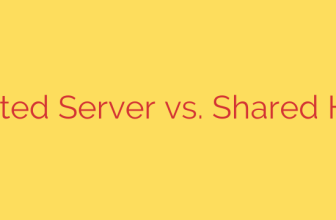
Building a Resilient Defense: The Power of a Blameless Cybersecurity Culture
When a security breach occurs, the first question is often, “Who is to blame?” An employee clicks a phishing link, a developer misconfigures a server, or a user chooses a weak password. The knee-jerk reaction in many organizations is to find the individual at fault and apply disciplinary action. While this seems logical, this approach is not only ineffective—it’s actively dangerous to your organization’s security.
A culture built on blame and fear doesn’t create accountability; it creates an environment where mistakes are hidden. To build a truly robust and resilient security posture, organizations must shift from a punitive model to a blameless one.
The Hidden Dangers of a Blame-Based Security Model
When employees fear punishment for making a security error, they are far less likely to report it. A clicked phishing link, a lost company device, or a suspicious email attachment goes unreported for fear of reprisal. This silence gives cybercriminals a critical head start, allowing a minor incident to escalate into a catastrophic breach.
A blame culture creates several critical weaknesses:
- It discourages transparency: Employees will try to fix problems themselves or, worse, ignore them, hoping no one notices. This robs your security team of vital, time-sensitive information.
- It focuses on the wrong problem: Punishing an employee for clicking a malicious link ignores the larger systemic issues. Why did the phishing email get past your filters? Was the security awareness training ineffective? Why was the user able to execute a malicious file?
- It damages morale and trust: A punitive environment erodes trust between employees and management, fostering an “us vs. them” mentality. This makes it nearly impossible to build a cohesive, security-conscious culture.
Ultimately, blame culture actively undermines security by treating human error as a moral failing rather than a systemic weakness.
What is a Blameless Cybersecurity Approach?
A blameless cybersecurity culture operates on a fundamental principle: human error is a symptom of a flawed system, not the root cause of a problem. Instead of asking who made the mistake, the focus shifts to why the mistake was possible in the first place.
This approach assumes that every employee is acting with positive intent and wants to do their job well. When an incident occurs, the goal isn’t to assign blame but to conduct a “blameless postmortem.” This is a collaborative investigation designed to understand the sequence of events and identify weaknesses in the processes, tools, and training that allowed the incident to happen.
The core idea is to focus on fixing the system, not blaming the person. This creates a safe environment where individuals feel empowered to report potential threats and mistakes immediately, without fear of punishment.
Actionable Steps to Foster a Blameless Security Culture
Transitioning to a blameless model requires a deliberate cultural shift, championed by leadership. Here are practical steps to get started:
Secure Leadership Buy-In: The change must start at the top. Executives and managers must publicly endorse and model blameless behavior. They need to communicate clearly that the goal is collective learning and improvement, not individual punishment.
Reframe Incident Reporting: Establish a clear, simple, and non-punitive process for reporting security incidents. Celebrate employees who report mistakes. Publicly thank them for their honesty and for providing a valuable learning opportunity that helps strengthen the organization’s defenses.
Conduct Blameless Postmortems: After any security event, gather the relevant teams to analyze what happened. Ban accusatory language. The conversation should revolve around systemic questions:
- What were the contributing factors in our technology and processes?
- Where did our security controls fail or prove insufficient?
- How can we improve our training to better prepare employees for this type of threat?
- What can we automate to prevent this class of error in the future?
Invest in People and Systems: Use the insights from your postmortems to drive real change. This may mean investing in better email filtering technology, implementing more intuitive multi-factor authentication, or redesigning your security awareness training to be more engaging and relevant to daily workflows.
The Tangible Benefits of Going Blameless
Adopting a blameless cybersecurity culture isn’t just a feel-good initiative; it delivers measurable improvements to your security posture.
- Faster Incident Detection and Response: When employees report issues immediately, your security team can contain threats before they spread, significantly reducing the potential damage and cost of a breach.
- Accurate Threat Intelligence: You gain a much clearer and more honest picture of your organization’s true security weaknesses, allowing you to allocate resources more effectively.
- A Stronger Human Firewall: When employees feel like valued partners in security, they become more engaged, vigilant, and proactive. They transform from a potential liability into your most powerful line of defense.
- Improved Resilience: By continuously learning from mistakes and strengthening your systems, you build an organization that is not just protected, but truly resilient and capable of adapting to the evolving threat landscape.
Shifting away from blame is one of the most impactful changes you can make to your security program. It transforms your culture from one of fear and silence to one of trust, transparency, and continuous improvement.
Source: https://www.kaspersky.com/blog/no-blame-cybersecurity-culture/54075/








